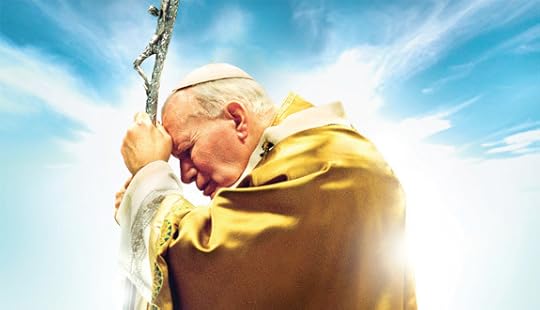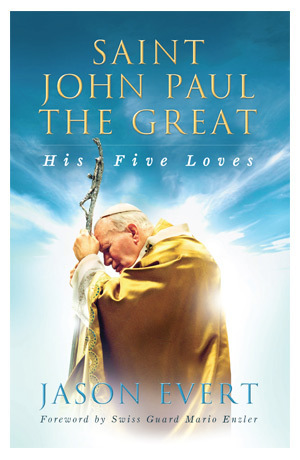John Paul II and The Blessed Sacrament

John Paul II and The Blessed Sacrament | Jason Evert | CWR
The late pontiff's sixty to ninety minutes of private prayer before Mass were the best part of his day
The following is Chapter 9, "The Blessed Sacrament", from Jason Evert's new book, Saint John Paul the Great: His Five Loves.
Between 5:00 and 5:30 a.m.—and sometimes as early as 4:00—Pope John Paul II would arise each morning, keeping virtually the same schedule he had as the bishop of Kraków. Although he enjoyed watching the sunrise, the main reason for his early start was to make time for prayer. He prayed the Rosary prostrate on the floor or kneeling, followed by his personal prayers, and would then go to the chapel in order to prepare for 7:30 Mass. According to his press secretary, Joaquín Navarro-Valls, his sixty to ninety minutes of private prayer before Mass were the best part of his day.
At the chapel, he would kneel before the Blessed Sacrament at his prie-dieu. The top of his wooden kneeler could be opened, and it was brimming with notes people had given to him, seeking his prayers for all kinds of petitions, including healings, the conversion of family members, or successful pregnancies. Perhaps thirty to forty new petitions were given to him each day, and he would pray specifically over every one. He said that they were kept there and were always present "in my consciousness, even if they cannot be literally repeated every day."

He told one of his biographers, "There was a time when I thought that one had to limit the ‘prayer of petition.’ That time has passed. The further I advance along the road mapped out for me by Providence, the more I feel the need to have recourse to this kind of prayer." Quite often, those who sent the petitions wrote back in thanksgiving for answered prayers. His assistant secretary noted that most of them expressed gratitude for the gift of parenthood. Not only did he intercede before the tabernacle for these individuals as if they were his most intimate friends, he routinely sought information about the progress of the cases. The liturgy would not begin until he had before him the petitions people had asked him to offer on their behalf.
After going to the sacristy to don his vestments for Mass, he would again kneel or sit for ten to twenty minutes.When visitors arrived to join him for Mass, they would always find him kneeling in prayer. Some said, "he looked like he was speaking with the Invisible." One of the masters of ceremonies added, "it seemed as if the Pope were not present among us." Bishop Andrew Wypych, who was ordained to the diaconate by Cardinal Karol Wojtyła, added, "You could see that he physically was there, but one could sense that he was immersed in the love of the Lord. They were united in talking to each other."
During the celebration of the Eucharist, one observer noticed, "He lingered lovingly over every syllable that recalled the Last Supper as if the words were new to him." Then, after the moment of Consecration, he would genuflect before Christ’s presence on the altar with tremendous reverence. Visitors to his private Masses noticed that you could hear the thud of his knee slamming down upon the marble floor when he became too weak to support himself as he genuflected. After Mass, a lengthy time of thanksgiving followed before the Holy Father greeted guests and gave each of them a Rosary.
The Eucharist was the principal reason for his priesthood. He said, "For me, the Mass constitutes the center of my life and my every day."
Carl E. Olson's Blog
- Carl E. Olson's profile
- 20 followers



